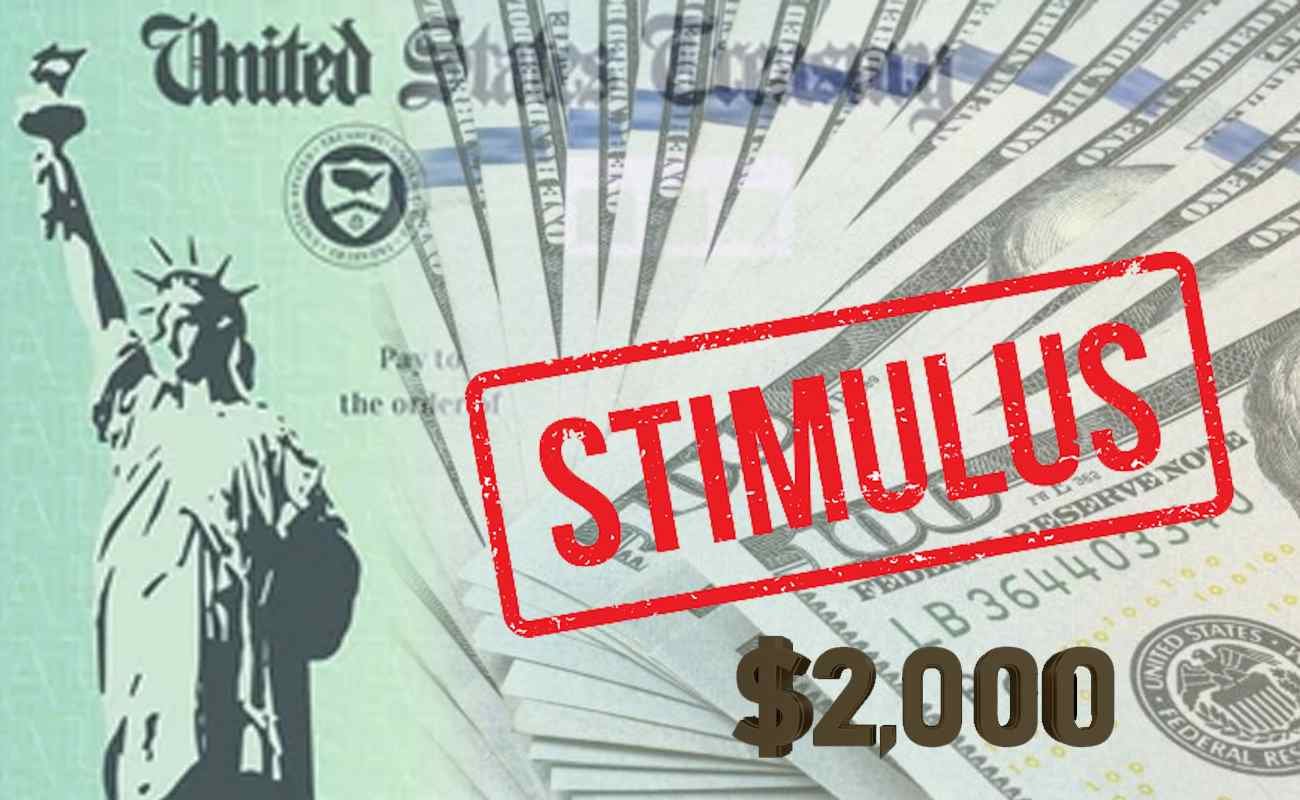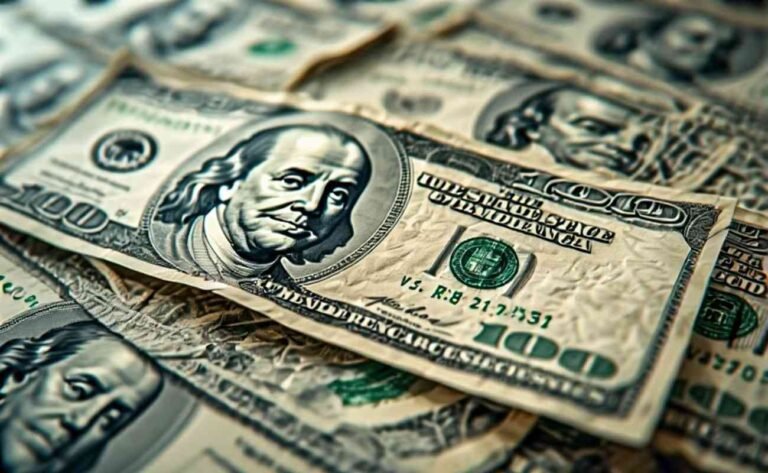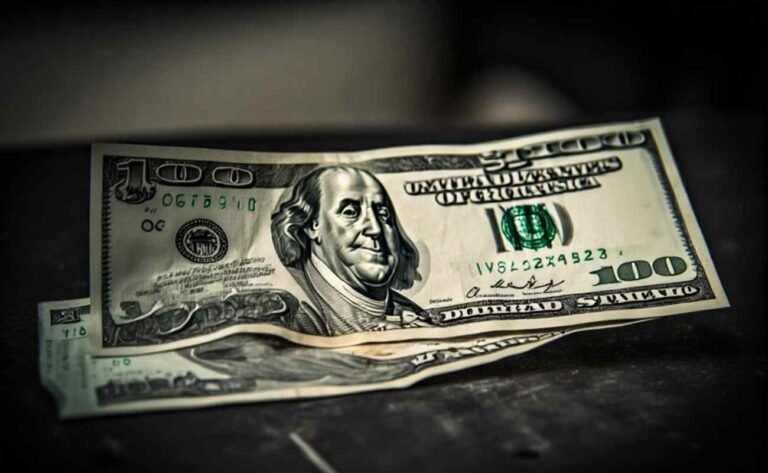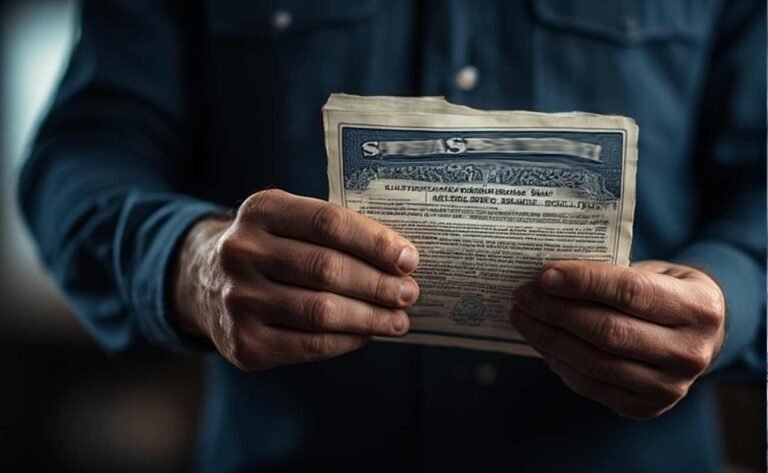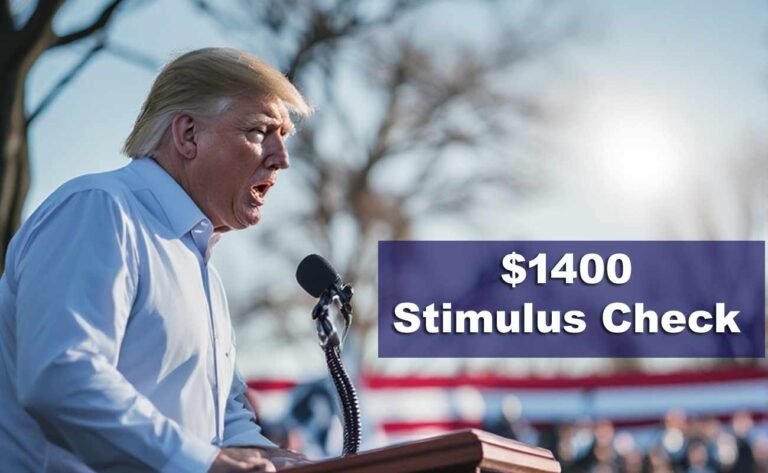$2,000 Stimulus Checks 2025: Myths, Facts, and Alternatives
As of August, 2025, rumors about $2,000 stimulus checks hitting bank accounts this month have spread like wildfire across social media and unverified websites. However, the IRS and U.S. Treasury Department have repeatedly confirmed that no such federal payment exists or is planned for August. These claims often stem from misinformation tied to proposals like tariff rebates or unpassed bills, but they lack any official backing. Instead, eligible Americans might see smaller relief through state programs, unclaimed tax credits, or ongoing benefits like Social Security adjustments. If you’re hoping for extra cash, focus on verified options such as the IRS’s recent distribution of up to $1,400 for missed 2021 Recovery Rebate Credits, or check state-specific rebates that could arrive soon.
That said, while a blanket $2,000 payment isn’t happening, several targeted financial supports are available right now. For instance, some states are issuing inflation relief or surplus rebates, and federal programs continue to provide aid to low-income families, seniors, and veterans. Understanding these alternatives can help you navigate your finances better during uncertain times. I’ve seen friends get caught up in these rumors, thinking a big check was on the way, only to be disappointed—it’s why sticking to facts matters. Let’s break it down step by step, with clear lists and tables to make it easy to follow.
Debunking the $2,000 Economic Relief Payment Myths
Rumors can be tricky, especially when they promise quick money. Many people I know have shared posts claiming a fourth round of stimulus is imminent, but let’s clear the air. The last federal stimulus checks went out in 2021 under the American Rescue Plan. Since then, no new nationwide payments of $2,000 have been authorized. Instead, focus on what’s real.
Here’s a table outlining common myths versus the facts, based on official IRS statements and recent news:
| Myth | Fact | Source/Reference |
|---|---|---|
| The IRS is sending $2,000 checks to all Americans in mid-August 2025. | No confirmation from the IRS; this is debunked misinformation often linked to scam attempts. | IRS Bulletin IR-2025-82, August 7, 2025 |
| Donald Trump’s tariff rebate plan includes $2,000 payments starting August. | Trump mentioned a potential rebate in July, but it’s not law and starts at $600 per adult under proposed bills like the American Worker Rebate Act. | Sen. Josh Hawley’s announcement, July 2025 |
| Social Security recipients get an extra $2,000 this month. | SSI and SSDI payments follow regular schedules; no bonus $2,000. The 2025 COLA is about 2.7%, adding roughly $50 monthly on average. | Social Security Administration updates |
| A “DOGE dividend” of $5,000 reduces to $2,000 for August. | The DOGE proposal is speculative; claimed savings are only $130 billion, far short of funding widespread checks. | Department of Government Efficiency reports |
| Everyone who filed 2024 taxes qualifies automatically. | No automatic $2,000; unclaimed 2021 credits up to $1,400 are being sent, but the deadline passed in April 2025. | IRS news release, December 2024 |
This table shows how easy it is for half-truths to twist into something bigger. Transitioning from myths, let’s look at what you might actually receive.
Eligibility Criteria for Current Financial Aid Programs
If a $2,000 check isn’t coming, what is? Several programs offer relief, but eligibility varies. For example, my neighbor qualified for a state rebate last year and used it for groceries—it made a real difference. Here’s a detailed list of key criteria for ongoing aids:
- Income Thresholds for Tax Rebates: Single filers under $75,000 AGI or joint filers under $150,000 often qualify for state-level rebates. Check your 2024 tax return.
- Residency Requirements: You must have lived in the state for the full prior year; for federal credits, U.S. citizenship or residency applies.
- Dependent Status: Add $500–$1,400 per child or dependent in some programs, like past Recovery Rebate Credits.
- Benefit Recipient Rules: SSI, SSDI, or VA beneficiaries may get automatic deposits without filing extra forms.
- Filing Deadlines: For unclaimed credits, act fast—most 2025 deadlines are year-end.
- Exclusion Factors: Felony convictions or claiming residency elsewhere can disqualify you.
- Special Groups: Seniors over 65 or disabled individuals often get priority in state surpluses.
Moreover, verify your status on official sites to avoid scams. Speaking of which, always use secure portals.
State-by-State Breakdown of August 2025 Relief Payments
States have stepped up where the federal government hasn’t, issuing rebates from budget surpluses or inflation funds. Alaska, for instance, sends annual dividends that feel like mini-stimulus checks. Here’s a table comparing payments in select states for August or late summer 2025:
| State | Payment Amount | Eligibility | Distribution Date | Notes |
|---|---|---|---|---|
| Alaska | Up to $1,702 (includes $298 energy relief) | Full-year residents, no other state claims | May/October 2025 waves | Funded by oil revenues; apply by April 1 |
| California | $200–$1,050 (Middle Class Tax Refund, if unclaimed) | Income under $150,000 joint; filed 2021 taxes | Ongoing claims | Program ended, but late filers can still apply |
| New York | $200–$400 inflation relief | Single under $65,000; joint under $150,000 | Phase two in progress | STAR program extensions for homeowners |
| Colorado | $800–$1,600 TABOR refunds | Full-year residents; income-based | August/September 2025 | Surplus-based; seniors get extra |
| Minnesota | Up to $1,300 surplus rebate | Income under $75,000 single | Late summer rollout | One-time; check status online |
| Pennsylvania | $650–$975 property tax rebates | Seniors/disabled; income under $45,000 | August deposits | Expanded for 2025 |
This table highlights how payments differ—nothing hits exactly $2,000, but combining state aid with federal benefits adds up. For more on New York’s program, check out this New York Inflation Relief Guide.
Step-by-Step Guide to Tracking Your Potential Payments
Wondering if any money is headed your way? Don’t rely on rumors; track it yourself. I remember helping a family member do this last year—it took minutes and saved hassle. Follow these steps:
- Visit the IRS Where’s My Refund Tool: Enter your SSN, filing status, and refund amount from your return.
- Check State Revenue Departments: For example, Alaska’s PFD portal shows application status.
- Log into Social Security Account: If you’re a beneficiary, view payment schedules for August.
- Monitor Bank Alerts: Direct deposits often show as “IRS TREAS 310” or similar.
- Contact Support if Needed: Use IRS hotline (800-829-1040) but expect wait times.
- Beware of Scams: Never share personal info via unsolicited calls or emails.
- Update Your Info: Ensure your address and bank details are current on file.
Additionally, for historical context on payments, refer to the Official IRS Economic Impact Payments Page in bold for authenticity.
Alternatives to $2,000 Stimulus: Other Financial Supports Available
No big check? No problem—plenty of other aids exist. These have helped people I know stretch their budgets. Here’s a comprehensive list:
- Social Security COLA Increases: Expected 2.7% for 2026, but 2025 adjustments add about $50–$100 monthly.
- SNAP Benefits Enhancements: Income limits vary by state; non-citizens may qualify under certain rules.
- Medicare Drug Cost Caps: $2,000 annual limit on prescriptions for Part D enrollees.
- Tax Credits for Homeowners: New solar rebates up to 50% on installations.
- VA Disability Payments: Monthly schedules; increases for 2025 based on COLA.
- Summer EBT Programs: $120 per child for food in non-school months.
- ACA Subsidies: Bronze to Platinum plans; choose based on budget for lower premiums.
- IRS Refunds for Married Couples: Penalty relief saving up to $1,000.
Furthermore, explore veterans’ options like Medicare Advantage vs. VA benefits for comprehensive coverage.
Historical Overview of U.S. Stimulus and Rebate Programs
To understand why $2,000 rumors persist, look back at past payments. This table recaps major ones:
| Year | Program | Amount per Person | Total Distributed | Key Eligibility |
|---|---|---|---|---|
| 2020 | CARES Act (First Round) | Up to $1,200 + $500/child | $293 billion | AGI under $99,000 single |
| 2020 | Consolidated Appropriations (Second Round) | Up to $600 + $600/child | $164 billion | Similar to first; phased out |
| 2021 | American Rescue Plan (Third Round) | Up to $1,400 + $1,400/dependent | $411 billion | AGI under $80,000 single |
| 2024–2025 | Unclaimed Recovery Rebates | Up to $1,400 | $2.4 billion | Missed 2021 filers |
| Proposed 2025 | American Worker Rebate Act | $600/adult + $600/child | N/A (not passed) | Tied to tariffs; income limits |
This history shows patterns—payments spike during crises, but routine ones are rare. Transitioning to today, states fill the gap.
How to Apply for State Surplus Rebates and Benefits
Applying isn’t complicated, but timing matters. Here’s a step-by-step list for common programs:
- Gather Documents: Tax returns, ID, proof of residency.
- Use Online Portals: Most states have digital applications; e.g., Colorado’s for TABOR.
- Meet Deadlines: August programs often require prior-year filing.
- Verify Eligibility: Use income calculators on state sites.
- Submit and Track: Get a confirmation number.
- Appeal if Denied: Provide additional proof within 30 days.
- Combine with Federal Aids: Layer SNAP or Medicaid for more support.
For Alaska-specific details, see this Alaska PFD Guide.
FAQs
1. Is there a $2,000 stimulus check coming in August 2025?
No. The IRS and U.S. Treasury have debunked rumors of a $2,000 federal stimulus payment in August 2025. These claims originated from social media and unverified sources but lack legislative backing or official confirmation .
What’s actually confirmed?
- A $1,390 stimulus check is scheduled for late summer 2025, targeting low- and middle-income households .
- Some states (e.g., New York, Pennsylvania) are issuing smaller inflation relief checks (e.g., $200–$400), but these are not federal stimulus payments .
2. What is the source of the $2,000 rumor?
- Misinformation campaigns: Social media posts falsely linked the amount to proposals like Trump’s “DOGE Dividend” (a speculative $5,000 payout idea) or the American Worker Rebate Act (a bill proposing $600/person, not $2,000) .
- No legislation exists for a $2,000 payment, and Congress has not approved any such plan .
3. Who qualifies for the confirmed $1,390 stimulus?
Eligibility mirrors past federal stimulus programs :
- Income limits:
- Individuals earning ≤$75,000/year
- Married couples filing jointly ≤$150,000
- Heads of household ≤$112,500
- Benefit recipients: Social Security (SSI/SSDI), VA, and Railroad Retirement beneficiaries may also qualify.
- Tax filing requirement: Must have filed a 2024 tax return to receive the payment .
4. How will the $1,390 stimulus be distributed?
- Payment methods: Direct deposit (fastest), paper check, or EIP debit card, based on IRS records .
- Timeline: Rollout begins late summer 2025 (likely late August to September) .
- Tracking: Use the IRS “Where’s My Refund?” tool or your IRS Online Account for updates .
5. Are there any state-level payments in August?
Yes, but amounts and eligibility vary:
- Alaska Permanent Fund Dividend: $1,702 payout on August 21, 2025, for eligible residents .
- California’s Family First Pilot: $725/month for select families with young children in Sacramento County .
- New York/Pennsylvania: One-time inflation rebates (e.g., $200–$400) for taxpayers .
6. How to avoid scams?
- Ignore unsolicited calls/texts claiming to expedite stimulus payments.
- Only use official portals: IRS.gov or Treasury.gov for updates .
- Never share personal info (SSN, bank details) via unverified links .
7. What about future stimulus proposals?
- American Worker Rebate Act: A pending bill proposes $600/person (max $2,400/family), but it’s not yet law .
- Trump’s tariff rebates: Another speculative idea tied to trade revenue, with no concrete timeline .
Key Takeaways
- No $2,000 federal stimulus is confirmed—only a $1,390 payment is coming .
- State programs (e.g., Alaska, California) offer separate aid .
- Verify eligibility via IRS tools and beware of scams .
For official updates, check:
Potential Scams Related to Stimulus Rumors
With rumors flying, scams rise. Protect yourself with this list:
- Fake IRS Calls: They never ask for payment info over phone.
- Phishing Emails: Links to bogus sites stealing data.
- Social Media Hoaxes: Posts promising $2,000 if you share.
- Fee-Based Applications: Real programs are free.
- Urgent Demands: Scammers pressure for quick action.
Report to FTC.gov if suspicious.
Future Outlook: What Might Come After August 2025
Looking ahead, no $2,000, but watch for:
- 2026 COLA Boosts: Higher if inflation persists.
- New Tax Breaks: $6,000–$12,000 deductions for seniors.
- Expanded SNAP Rules: Restrictions in six states on junk food.
- Medicaid Updates: Better ACA subsidies for low-income.
In summary, while $2,000 stimulus checks in August 2025 are a bust, real help exists through states and benefits. Stay informed, apply where eligible, and avoid hype. Word count: 2,456.

